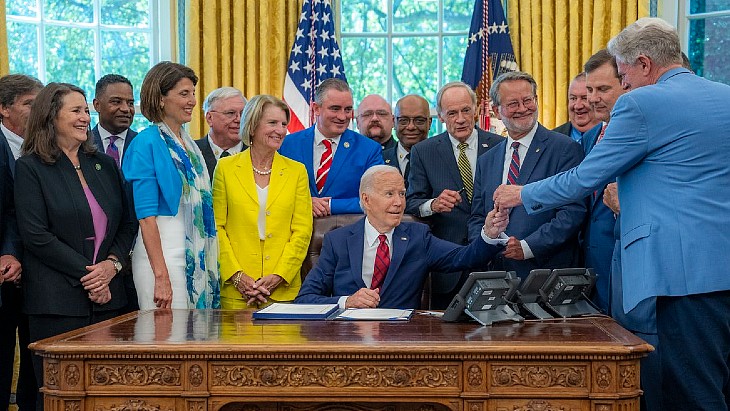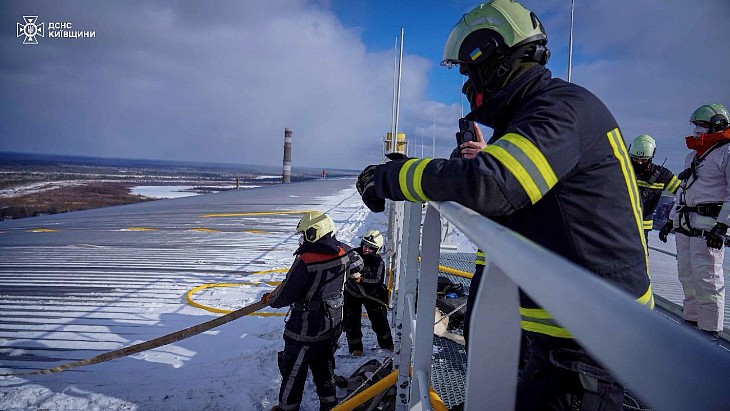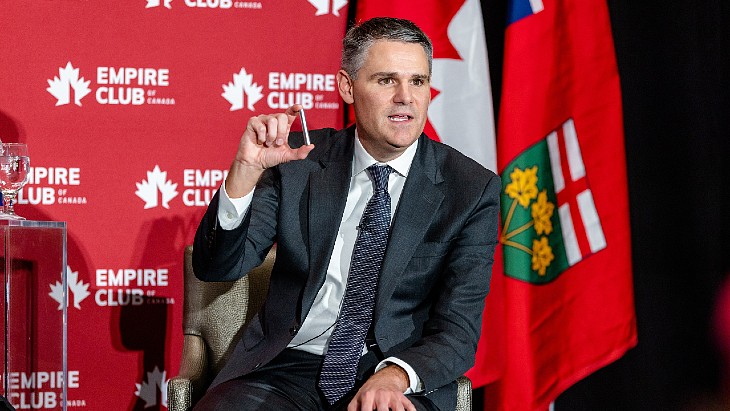IAEA team continue Zaporizhzhia inspections, but await access to roofs
.jpeg)
The latest update from Director General Rafael Mariano Grossi said that following visits to Zaporizhzhia unit 1 and unit 3 earlier in July, the agency's team went to the reactor building of unit 2 and unit 4 this week: "In each case, the team checked the main control room, reactor hall, spent fuel pool, emergency control room, rooms where electrical cabinets of the safety systems are located, and the turbine hall."
The update adds: "While the IAEA experts saw transport trucks in the turbine halls of units 1, 2, and 4, there was no visible indication of explosives or mines. The team has not yet been granted requested access to the roofs of the reactors and their turbine halls, including units 3 and 4 which are of particular interest. The agency continues to request such access."
The United Nations in May adopted Grossi's basic principles for helping to ensure the safety of the nuclear power plant, which is on the frontline of Russian and Ukrainian forces, and has been under Russian military control since the start of March 2022. These principles include that there should be no firing at or from the plant, and it should not be used as a storage centre, or base, for heavy weapons.
In the update, the IAEA said that the water cooling situation "remains relatively stable" with the water level - affected by the failure of the Kakhovka dam last month - decreasing by about 1 centimetre per day "due to usage and evaporation" and added "the site continues to have sufficient water for some months". A test hole has also been drilled outside the site perimeter as part of efforts to build another well for an alternative source of water.
It added that it continued to encourage the plant to "investigate options to install an external boiler to generate the steam required" for the "various nuclear safety purposes including the processing of liquid radioactive waste collected in storage tanks". At the moment the steam is produced by unit 5, which is in "hot shutdown" unlike the other five units which are all in cold shutdown.
The plant operators are preparing to move unit 4 into hot shutdown to produce the steam while unit 5 is put into cold shutdown to allow maintenance activities to take place. The State Nuclear Regulatory Inspectorate of Ukraine (SNRIU) has issued orders for all six units to be placed in a cold shutdown state - it says that not placing all six units in cold shutdown "to minimise water consumption" and reduce safety risks is "senseless" and SNRIU said that attempts to "force" Ukrainian specialists to transfer unit 4 to "hot shutdown" in contravention of their regulatory order had been "unsuccessful". The Russian operators of the plant say such a move is not required from a "legal or technological point of view".
Next week the IAEA is sending a fact-finding mission to Kyiv and Kharkiv "as part of activities to assist Ukraine in ensuring the safety and security of radioactive sources". Grossi said: "The IAEA Support and Assistance Mission on the Safety and Security of Radioactive Sources in Ukraine - ISAMRAD - will assess the radiation safety and nuclear security situation regarding radioactive sources in the country and also identify equipment and other requirements."
Following the latest IAEA update on the situation at what is Europe's largest nuclear power plant, Russia's Tass news agency reported that the plant's director Yury Chernichuk praised the IAEA's work in an interview with Channel One: "The international mission under the UN aegis remains, in my view, the only independent source of information about the situation at the NPP for the entire international community."










_88592.jpg)

